The third supporting question, “what was the New Deal?” helps frame the concept that the U.S. government developed laws and policies to try to help citizens suffering through a major crisis. Complete the following task using the sources provided to build a context of the time period and topic being examined.
Formative Performance Task 3
Study featured sources A-O. What do these sources tell us about how the North Dakota is connected to global markets? Write a summary describing how the ag sector has impacted global markets and vice versa
Featured Sources 3
Featured sources A-O in this section are primary sources. Use them along with additional library and internet sources as needed to complete the performance task. As you study these sources, consider the following questions:
- The Great Depression raised fears of social disorder as the economy collapsed. What do you think was the more important purpose of the CCC: to build structures on federal and state land in the West, or to prevent a generation of young men from becoming permanently unemployed criminals?
- Read the excerpt about the selection process carefully. This is a North Dakota document, not a federal document. What does this paragraph tell us about the men selected in North Dakota for the CCC? What can you learn about the values of the North Dakota Public Welfare Board in 1938? Do those values represent the state or just a group of people?
- Perry Leland mentions many things that were part of common knowledge in the 1930s, such as “Sam Browne,” but are seldom used today. Identify those terms which are unfamiliar to you and create a list. Can you find out what those words or terms mean? Where do you go to find out more?
- Leland refers on Page 8 to dams being built around the West. Research Grand Coulee Dam and Hoover Dam to find out more about these massive engineering projects of the 1930s.
- Leland seems surprised that he had so many good opportunities for interesting (and relatively easy) jobs in the CCC. Why, do you think, was he singled out for special assignments?
- Several public parks in North Dakota as well as many dams and federal wildlife refuges, were CCC projects. Is there a CCC project near your home? Can you find structures there of stone or log architecture typical of the CCC?
Civilian Conservation Corps
When Franklin Roosevelt took the oath of office in March 1933, the nation was in the third year of a severe economic depression compounded by environmental disasters including drought in the Great Plains. Immediately, Roosevelt proposed to Congress an ambitious program designed to put people back to work, restore faith in the banking system, and shore up the economy. The first one-hundred days of Roosevelt’s administration produced dozens of new laws many of which were known by their initials such as the Works Progress Administration (WPA) and Agricultural Adjustment Administration (AAA). Among these “alphabet soup” agencies was the Civilian Conservation Corps, or the CCC, also known as Roosevelt’s Tree Army.
By June 1933, 235,000 men had enrolled and the CCC was opening camps where they were to work on federal and state public improvement projects. They built trails in national forests, camp sites and visitor centers in state and national parks, and dams and roads. Most of the work the CCC performed was located west of the Mississippi River. As they worked, they learned construction skills, particularly in operating heavy equipment and working with stone. They were also given the opportunity to attend classes in a variety of topics which helped them prepare for life after their CCC service was concluded. The organization was not part of the Army, but it was run in military fashion and the Army supervised the agency because it had the ability to organize and move large numbers of men about the country. CCC men lived in temporary camps where they worked, ate, slept, studied, and engaged in leisure activities. When their work was done, they departed for another work site. In this way, young men saw some of the United States other than their home state.
Included in this document set are the application form for admission to the CCC, the certification form for those who were accepted, a memoir of a young North Dakota man who spent six years in the CCC, and photographs of projects and daily life in CCC camps. Source: SHSND Archives Mss 10648; 353.092 P960.
The men who joined the CCC had to be recognized as part of a needy family in their home counties. Veterans of World War I and the Spanish American War could also join. African American men served in segregated camps; Native American men served in units organized under the Department of Interior Indian Service. North Dakota was part of the eight-state Seventh Corps Area which had an allotment of 30,000 men at one time and 154 camps. Hundreds of thousands of young men between the ages of 19 and 26 joined the CCC. Some served for six months, others stayed on for years. The program’s goal was to raise the moral quality of young men through work and discipline and to prevent the young men from becoming a burden to their parents or becoming criminals. Overall, many young men enjoyed their experience in the CCC. They traveled, ate regular meals, had fun on weekends, and sent money home to their families. In fact, they were paid $30 per month, of which $25 was automatically mailed to their parents.
Selection
The Welfare Board of each county chose young men for the CCC program. This means that the young men had to be members of families receiving some form of relief. The selection process was complicated. Two, two-page forms had to be completed by the applicant, and there was a quota for each county. Though participation was voluntary, and an enrollee could ask for a discharge at any time, leaders were concerned about desertion and young men who were just looking for a handout. The following excerpt illustrates what the county welfare agents expected of CCC men in 1938:
Source: Manual of Procedure for the selection of Youths for the Civilian Conservation Corps by the Executive Secretaries and county Welfare Boards of North Dakota Acting As Local Selecting Agencies. . . . Bismarck, ND: Public Welfare Board of North Dakota, October 1938, page 2. SHSND 353.092 P960.
| Source A |
Application and Certificate 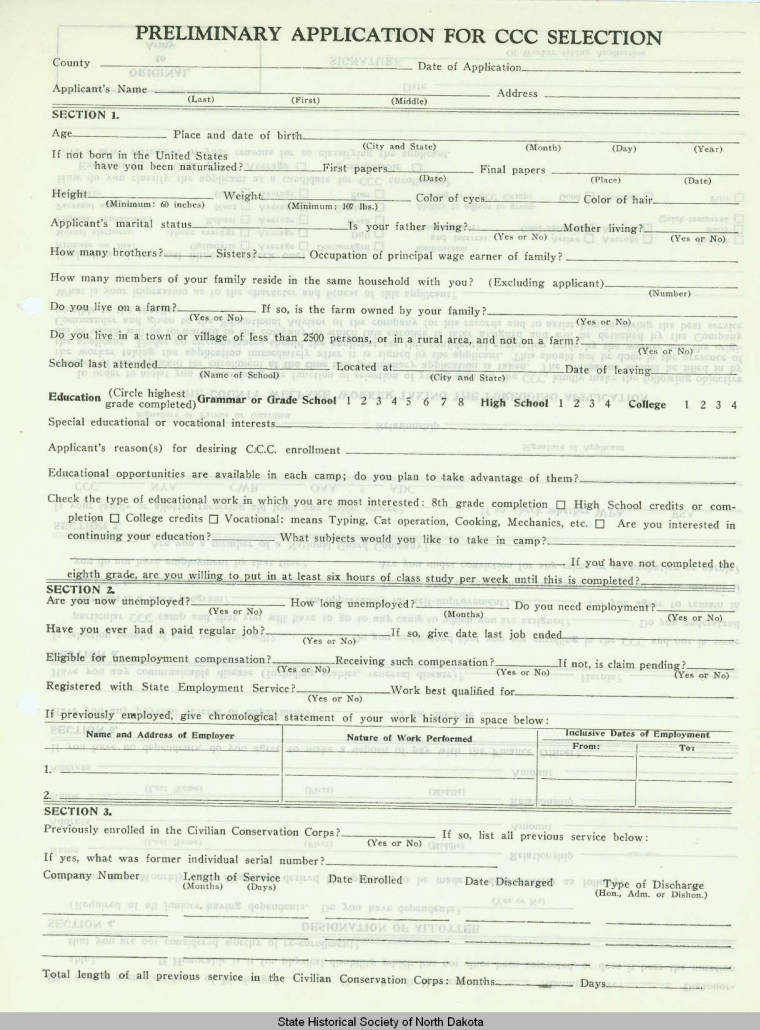
http://digitalhorizonsonline.org/digital/collection/uw-ndshs/id/3520 |
| Source B |
Harold P. Leland Memoir 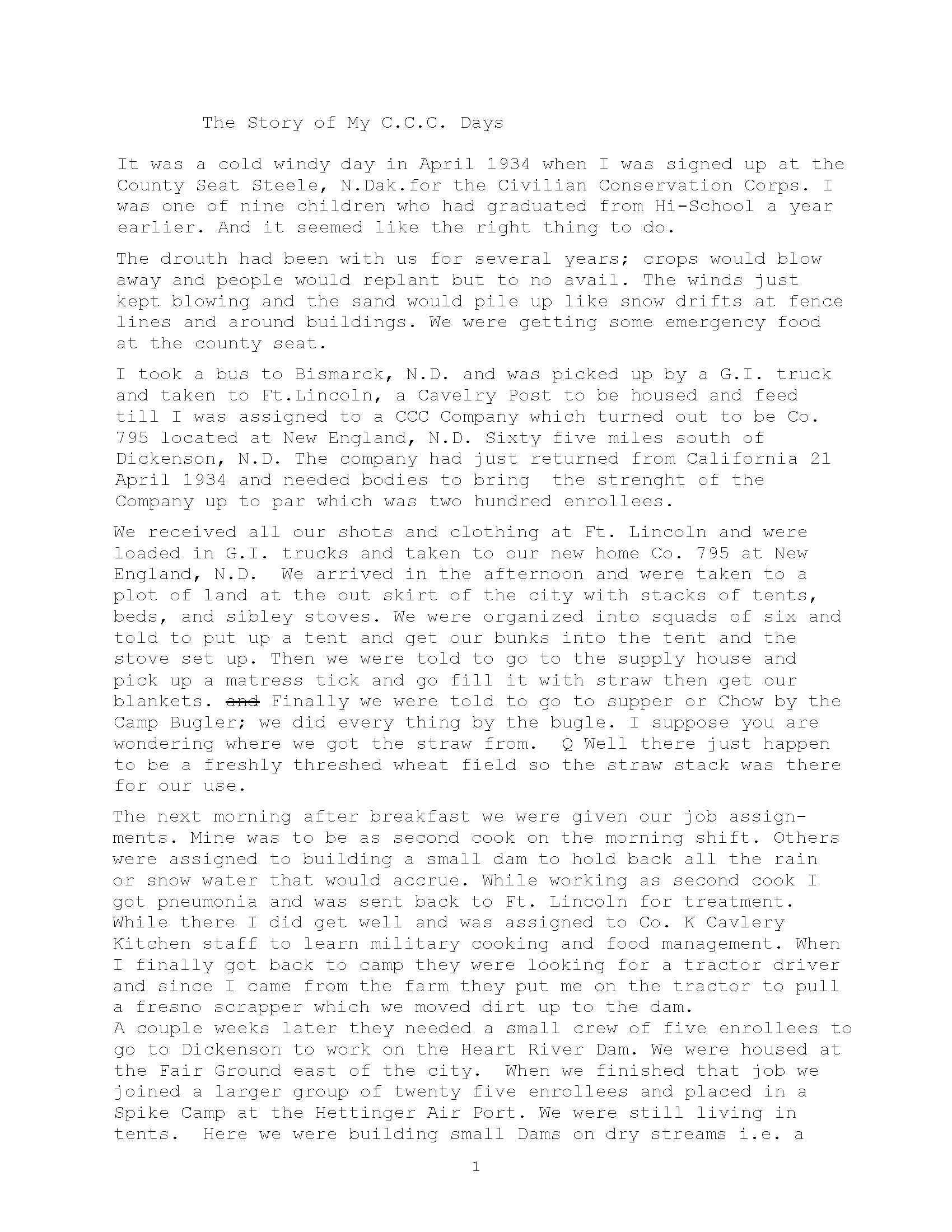
Harold Perry Leland was born in Lake Williams Township of Kidder County in 1915. His parents were Henry, a farmer, and Rachel Riskadahl who had emigrated from Norway eight years before Perry was born. He had ten siblings of which he was the third oldest. When he entered the CCC in 1934, there were probably eight children at home between the ages of nine and sixteen for his parents to raise. Perry Leland graduated high school in 1933, a rare event in those days. His education was extended by CCC training in office procedures and aeronautics. Following his CCC service, Leland worked as a civilian logistics officer at Hill Air Force Base in Ogden, Utah. He married and remained in Utah after his retirement. http://digitalhorizonsonline.org/digital/collection/uw-ndshs/id/3524 |
| Source C | 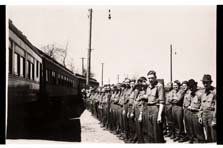
One advantage for the CCC men was travel to other parts of the country. These young men with a North Dakota company had been working in Arkansas and were preparing to return to Bismarck, ND in 1936. SHSND 10648, file 04-86. |
| Source D | 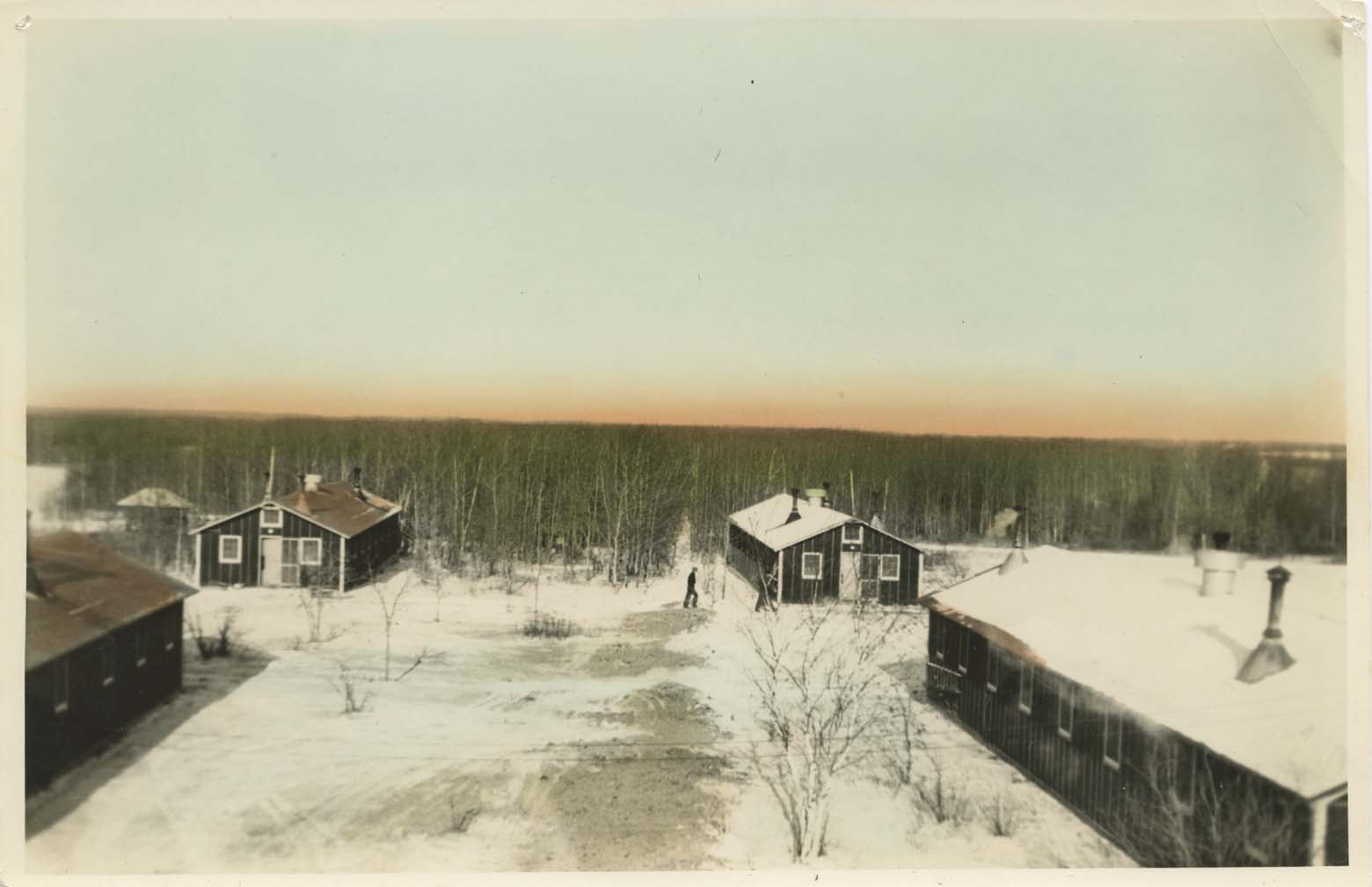
Bunkhouses, mess halls, canteens and other CCC buildings were temporary. In some states, CCC men lived in tents, but in North Dakota, severe winters required that they have buildings. These buildings at CCC Camp 744 at the International Peace Garden were covered with tar paper and were constructed to be torn down after the project was completed. This photograph was taken in 1935 by Thomas Falck, of Lignite, ND. SHSND 10648, file 1-03. |
| Source E | 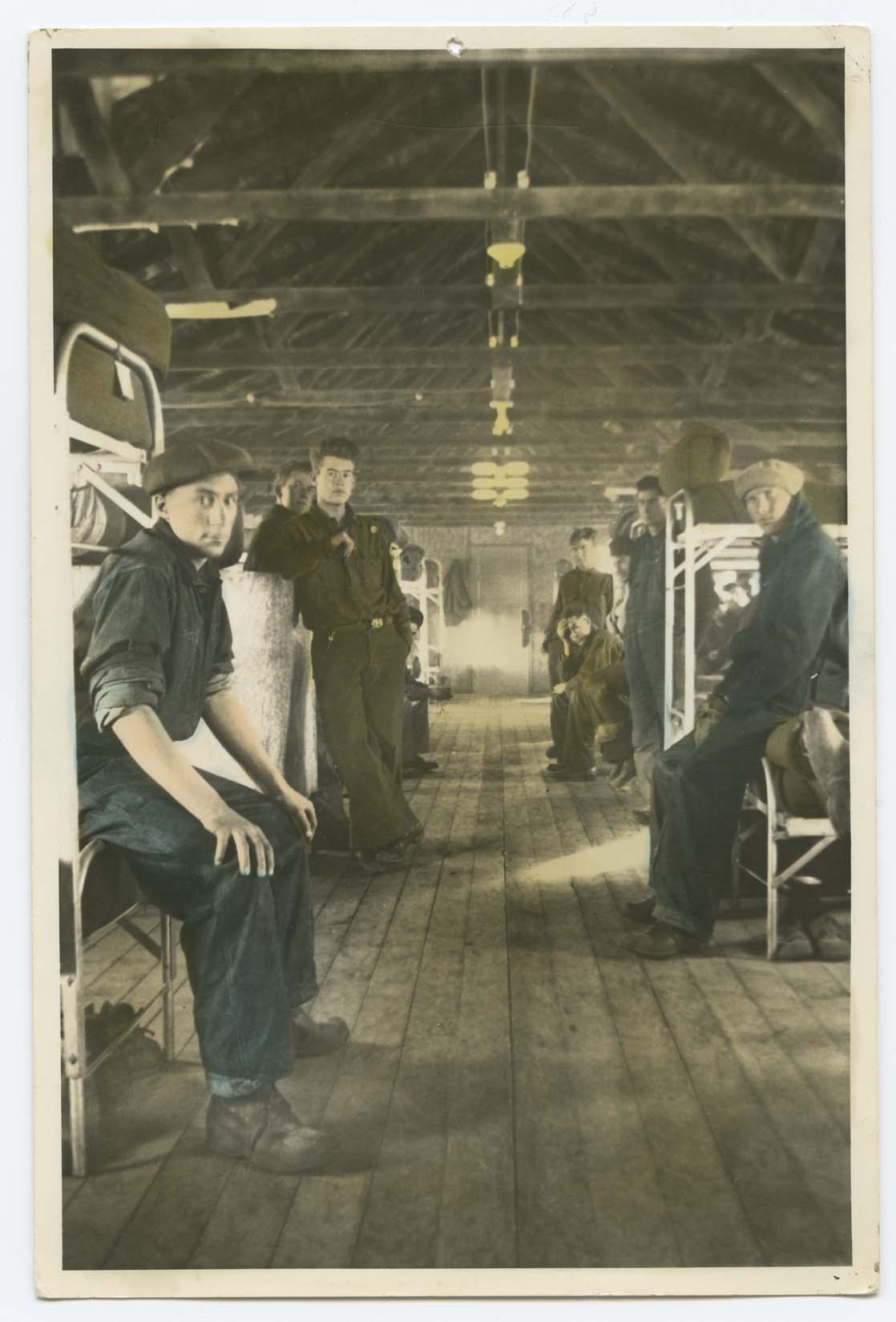
Men lived in bunkhouses like these at the International Peace Garden Camp 744 and ate in mess halls under an organization that was similar to Army life. The commanding officers of the CCC camps were usually Army officers, though the agency emphasized that the CCC was not a branch of the military. SHSND 10648 file 1-01 |
| Source F | 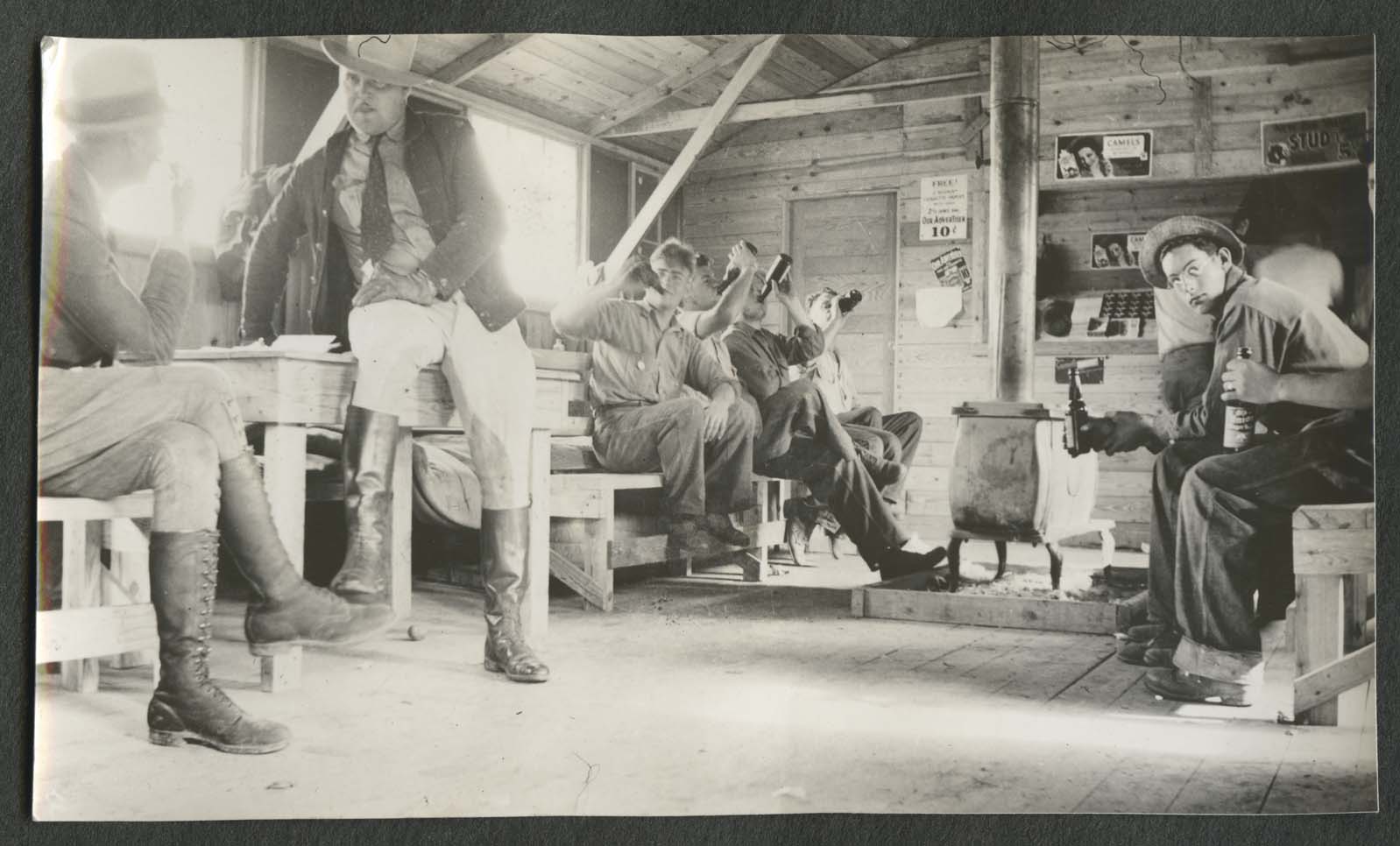
The canteen was a place where the men could purchase sodas, candy, and other items. There was space to relax and socialize. Here several young men drink sodas while two officers talk at another table. SHSND 10717, Box4, file 01, Album p 06-01. |
| Source G | 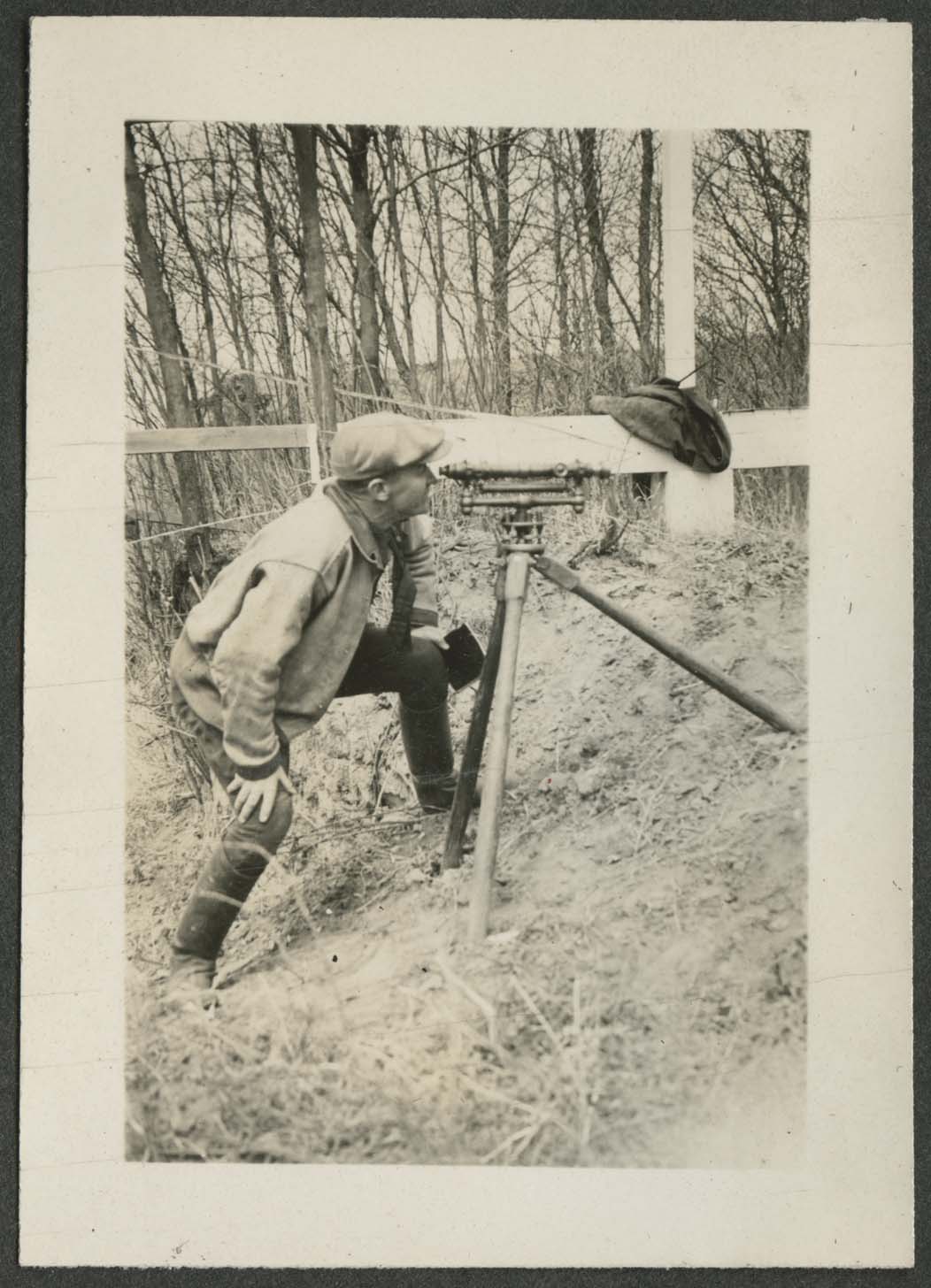
Building roads and structures required careful surveying, another skill CCC workers could learn on the job. SHSND 10717, Box 03, file 04, Album p.3-02. |
| Source H | 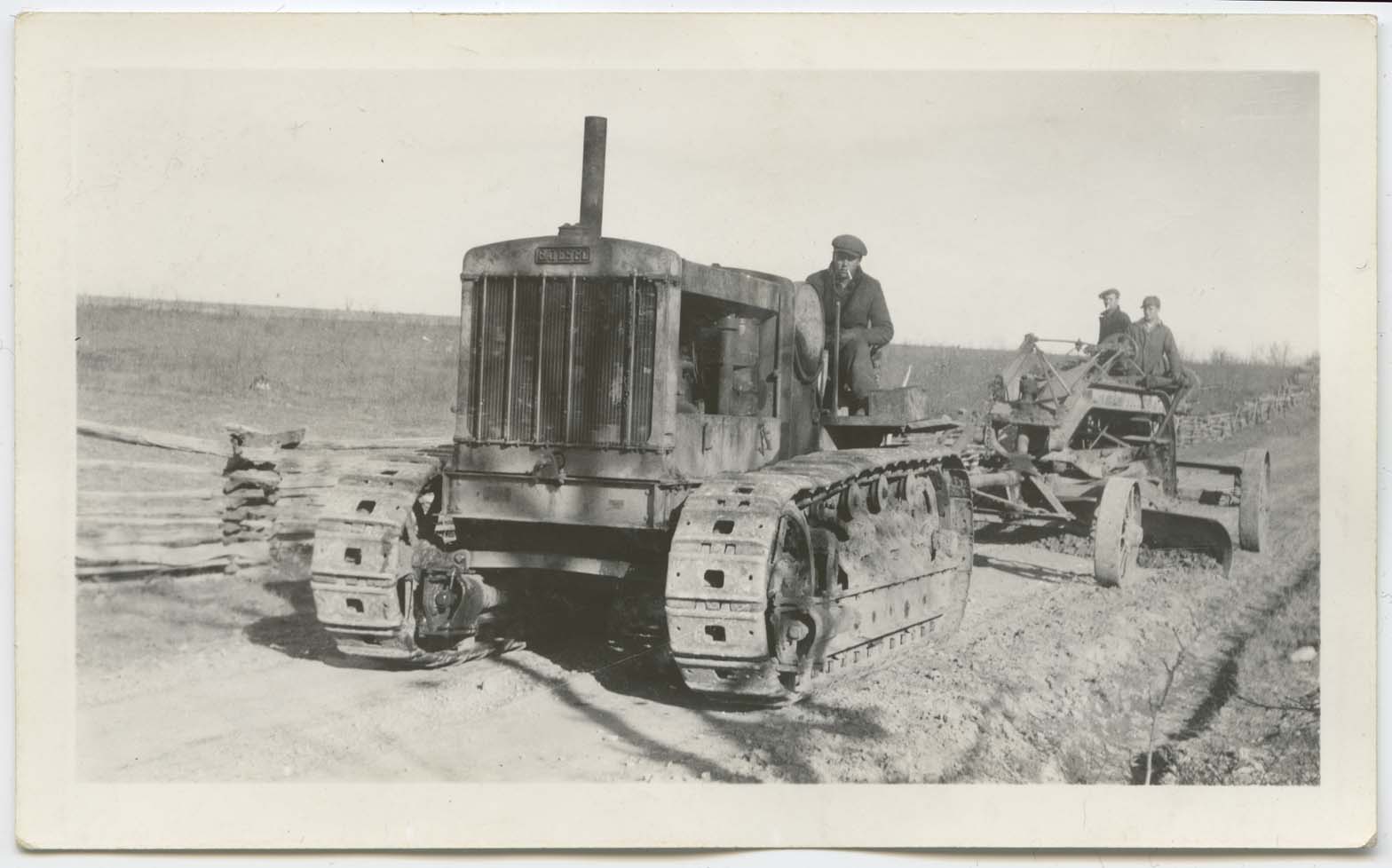
CCC workers learned skills such as driving trucks and tractors, cutting and placing stone, road building, and wood cutting. Though the CCC was not a vocational program, many young men were discharged with new work skills. SHSND 10717, Box 03, File 03-01. |
| Source I | 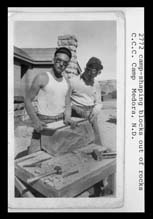
CCC members cut stone to build structures for the park that would become Theodore Roosevelt National Park near Medora. Goggles protect their eyes from stone chips. SHSND 0957-03. |
| Source J | 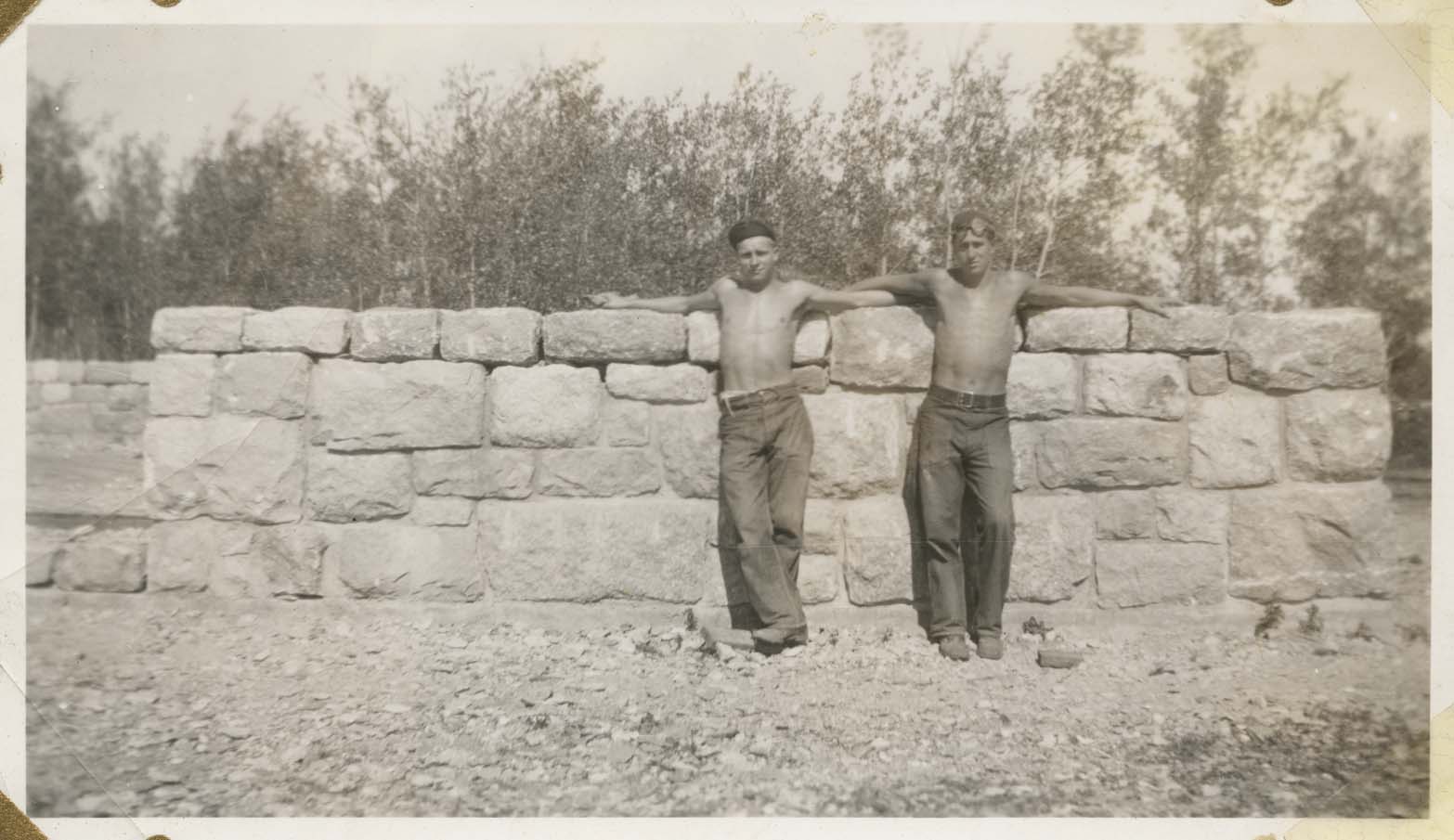
Two young men stand near a stone wall they probably have been working on. CCC men learned skills such as stonework and woodwork. The stone and log structures they built are still standing in many parks and national forest camps around the country. Low, sturdy buildings of log and stone were typical of state and federal tourist sites in the 1930s. SHSND 10648, file 2–05. |
| Source L | 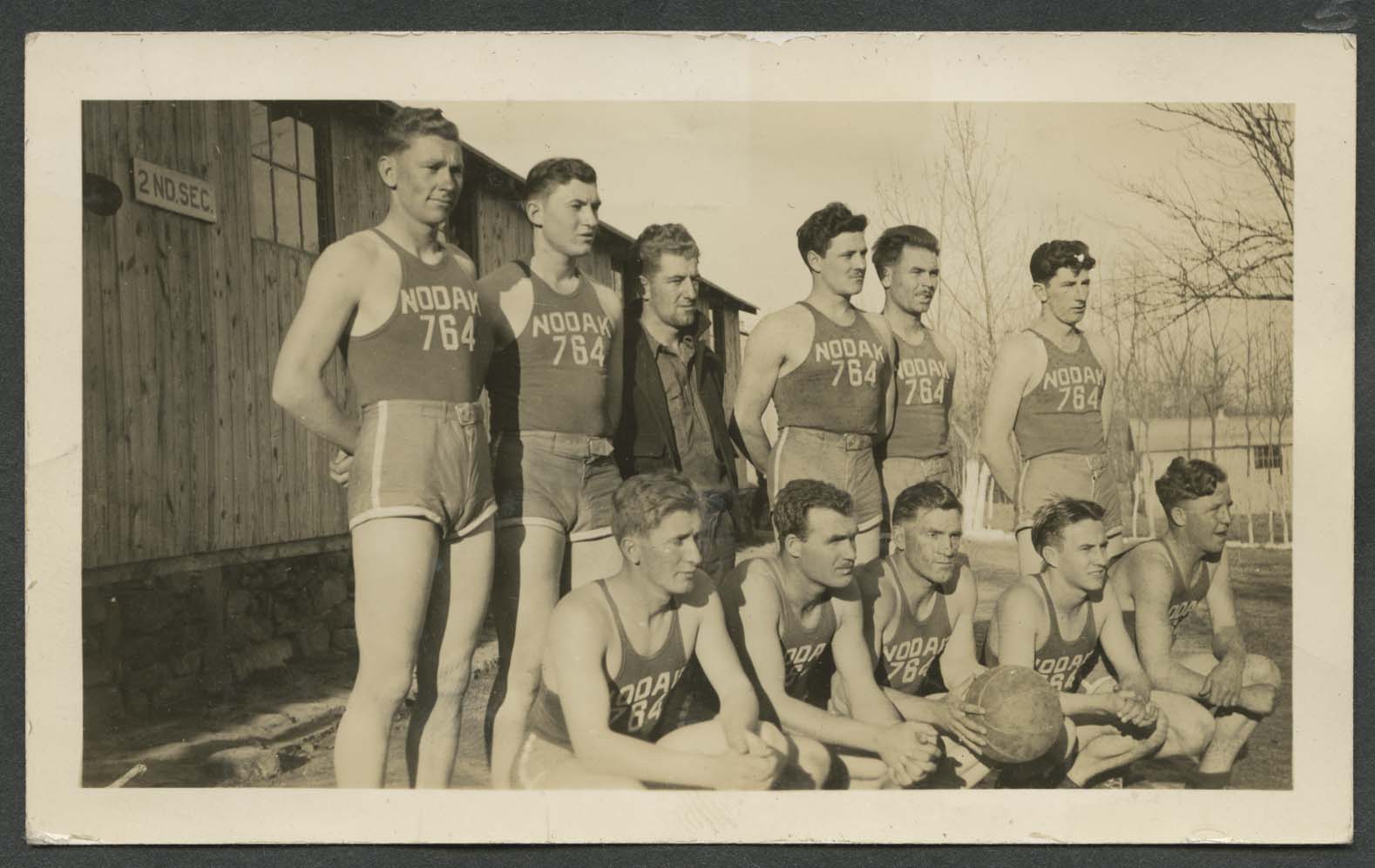
Members of the CCC Company 764 formed a basketball team. They proudly wore NODAK 764 on their jerseys. They may have been working in Arkansas at the time. SHSND 10717, Box 4, file 01, Album p 05-01. |
| Source M | 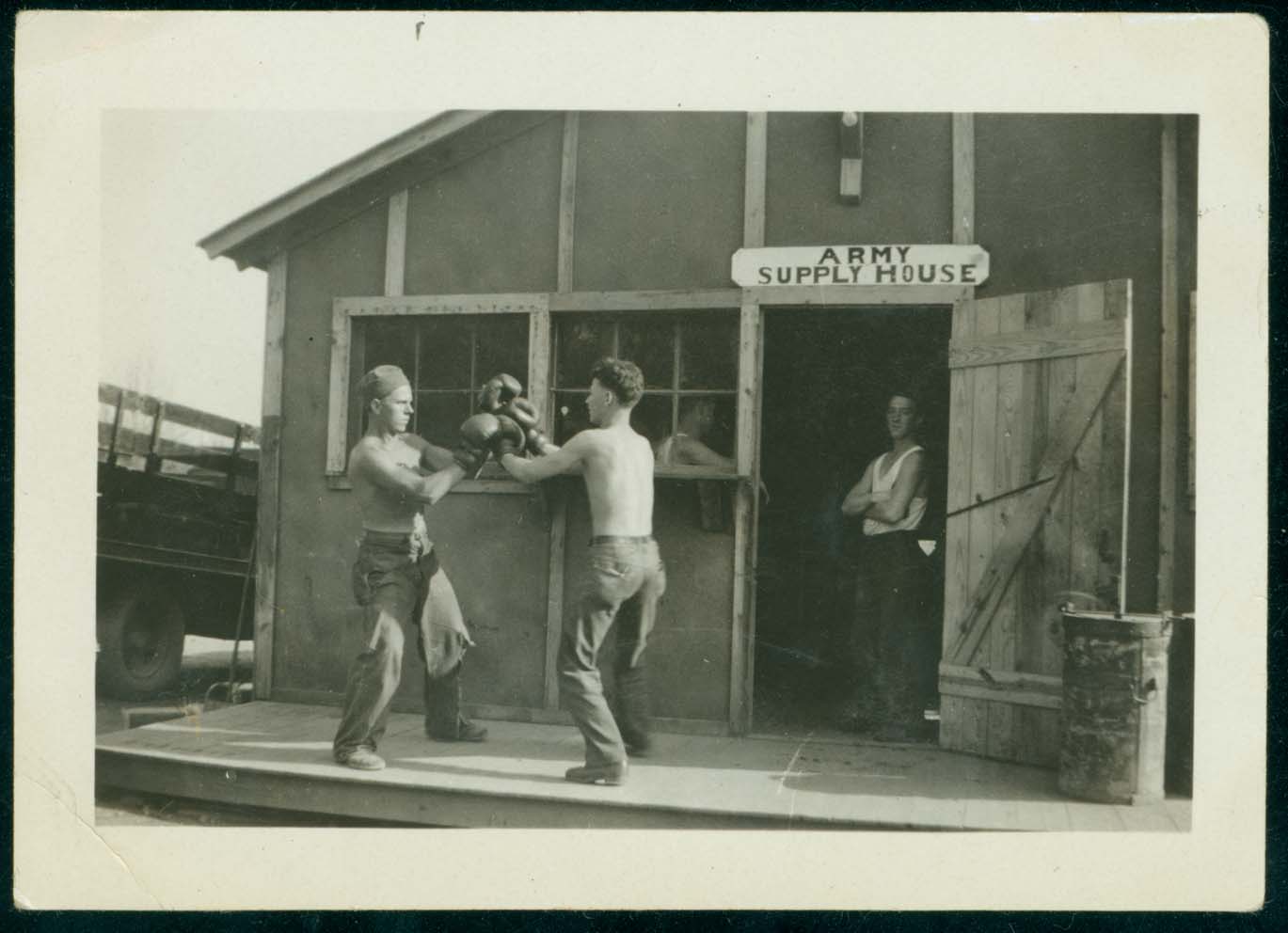
As in many other associations of young men, sports were an important leisure time activity. These two young men are boxing at CCC camp 2760 near Wishek, ND. SHSND 10648, file 03–39. |
| Source N | 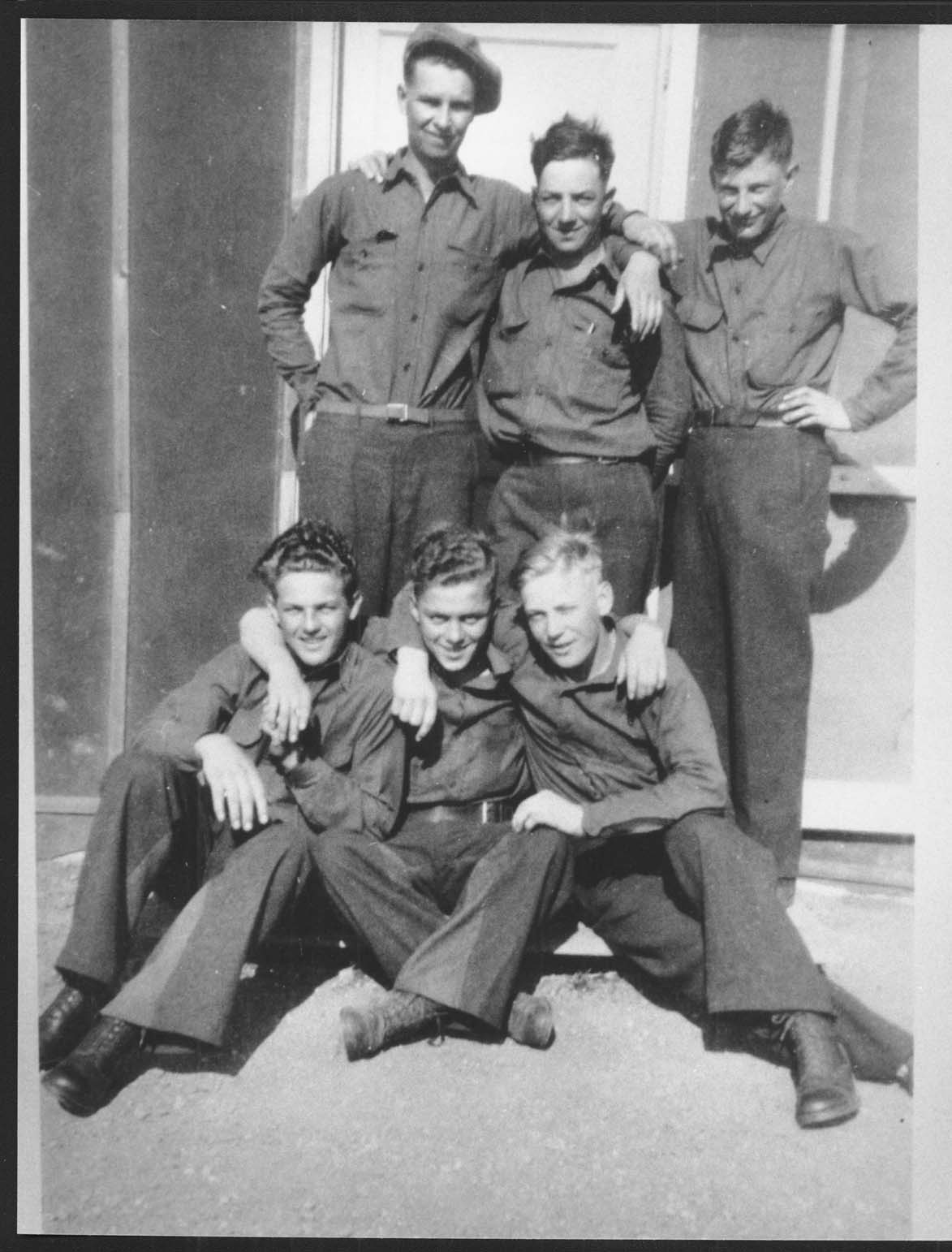
CCC members became good friends while working on projects near Medora, ND. CCC groups still have reunions to renew their friendships. SHSND: 0957-07. |
| Source O |


